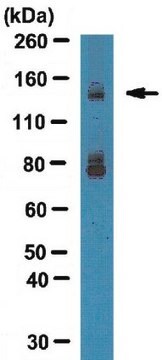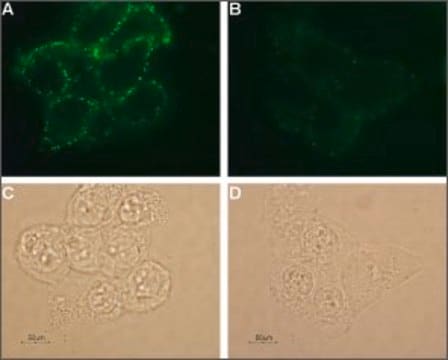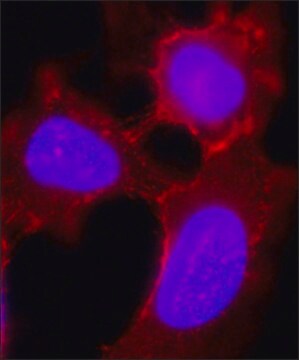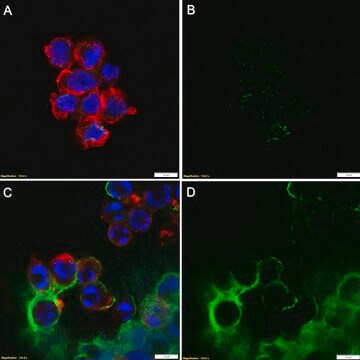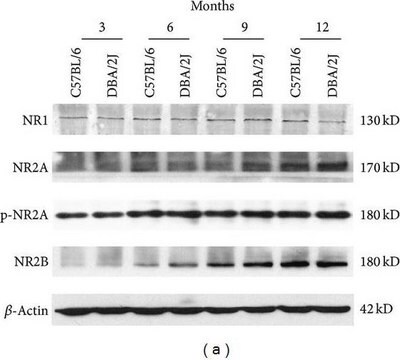AB5589
Przeciwciało przeciw kanałowi potasowemu Kv1.3, domena zewnątrzkomórkowa
Chemicon®, from rabbit
About This Item
Polecane produkty
pochodzenie biologiczne
rabbit
Poziom jakości
forma przeciwciała
affinity purified immunoglobulin
rodzaj przeciwciała
primary antibodies
klon
polyclonal
oczyszczone przez
affinity chromatography
reaktywność gatunkowa
rat, human
producent / nazwa handlowa
Chemicon®
metody
flow cytometry: suitable
western blot: suitable
numer dostępu NCBI
numer dostępu UniProt
Warunki transportu
wet ice
docelowa modyfikacja potranslacyjna
unmodified
informacje o genach
human ... KCNA3(3738)
Specyficzność
Immunogen
Zastosowanie
Pośrednia cytometria przepływowa: 0,5-5 μg przeciwciała na 1x10e6 komórek.
Rozcieńczenia należy wykonać przy użyciu białka nośnikowego, takiego jak BSA (1-3%).
Optymalne rozcieńczenia robocze muszą być określone przez użytkownika końcowego.
Neuroscience
Ion Channels & Transporters
Postać fizyczna
Przechowywanie i stabilność
Komentarz do analizy
Do przeciwciała dołączono bezpłatnie 40 μg antygenu kontrolnego (liofilizowany proszek). W przypadku kontroli negatywnej należy wstępnie inkubować 5 μg oczyszczonego peptydu z 1 μg przeciwciała przez godzinę w temperaturze pokojowej. Optymalne stężenia muszą być określone przez użytkownika końcowego.
Inne uwagi
Informacje prawne
Oświadczenie o zrzeczeniu się odpowiedzialności
Nie możesz znaleźć właściwego produktu?
Wypróbuj nasz Narzędzie selektora produktów.
Zwroty wskazujące rodzaj zagrożenia
Zwroty wskazujące środki ostrożności
Klasyfikacja zagrożeń
Aquatic Chronic 3
Kod klasy składowania
11 - Combustible Solids
Klasa zagrożenia wodnego (WGK)
WGK 3
Certyfikaty analizy (CoA)
Poszukaj Certyfikaty analizy (CoA), wpisując numer partii/serii produktów. Numery serii i partii można znaleźć na etykiecie produktu po słowach „seria” lub „partia”.
Masz już ten produkt?
Dokumenty związane z niedawno zakupionymi produktami zostały zamieszczone w Bibliotece dokumentów.
Nasz zespół naukowców ma doświadczenie we wszystkich obszarach badań, w tym w naukach przyrodniczych, materiałoznawstwie, syntezie chemicznej, chromatografii, analityce i wielu innych dziedzinach.
Skontaktuj się z zespołem ds. pomocy technicznej

